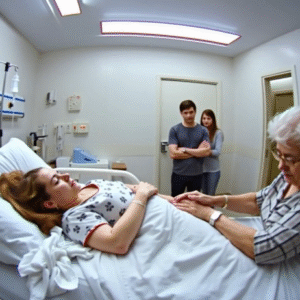Rice is a pantry staple for millions of households around the world. Whether you prefer the fragrant grains of jasmine rice or the nutty flavor of brown rice, understanding how to store and maintain its shelf life is key to minimizing waste and ensuring food safety. But what exactly affects rice’s shelf life, and how can you tell when it’s gone bad? This article will walk you through all the essential information about the shelf life of rice and provide practical storage tips for both uncooked and cooked rice.
Uncooked Rice vs. Cooked Rice: Understanding the Difference

Before diving into the details of rice’s shelf life, it’s important to make a distinction between uncooked and cooked rice. Both forms have very different storage needs and spoilage timelines, and understanding these differences will help you maintain the best quality.
Uncooked Rice:
Uncooked rice refers to the dried grains that are typically stored in your pantry. This includes varieties like white rice, brown rice, basmati rice, and jasmine rice. When stored properly, uncooked rice can last for years, making it a long-lasting staple in most homes.
Cooked Rice:
Cooked rice, on the other hand, is rice that has been prepared by boiling or steaming. Once cooked, rice becomes a perishable food item and must be stored correctly to prevent spoilage. It’s highly susceptible to bacterial growth if not handled carefully.
How Long Does Uncooked Rice Last?
The shelf life of uncooked rice can vary depending on the type of rice and how it’s stored. Let’s take a closer look at the common varieties of rice and their average shelf lives:
White Rice:
White rice has a long shelf life due to its refined nature and low oil content. When stored in a cool, dry place and kept in an airtight container, white rice can last up to 4 to 5 years or even longer.
Brown Rice:
Brown rice, being less processed and containing more natural oils, has a shorter shelf life than white rice. It typically lasts about 6 months to 1 year when stored in ideal conditions. Brown rice is more prone to spoilage because its oils can turn rancid over time.
Specialty Rice (Basmati, Jasmine, Arborio):
These varieties share a similar shelf life with white rice, lasting up to 4 to 5 years when stored correctly. However, it’s essential to keep them in airtight containers to preserve their distinct aromas and prevent moisture absorption.
How to Store Uncooked Rice to Extend Its Shelf Life
Proper storage is crucial for extending the shelf life of uncooked rice. Here are the best practices for storing rice and ensuring it stays fresh:
- Store in Airtight Containers:
To keep moisture and pests away, place your uncooked rice in airtight containers or vacuum-sealed bags. This will also help prevent the rice from absorbing any unwanted odors from nearby foods. - Cool, Dry Storage Area:
Always store uncooked rice in a cool, dry place away from sunlight and heat sources. A pantry or kitchen cabinet is ideal. Excess heat and moisture can cause the rice to spoil faster or attract bugs. - Consider Refrigeration:
If you live in a humid climate or are worried about pests, storing uncooked rice in the fridge can significantly extend its shelf life. In the fridge, uncooked rice can last up to two years or longer, especially if sealed tightly.
How to Tell If Rice Has Gone Bad
It’s important to regularly check your stored rice for any signs of spoilage. While uncooked rice can last for years, it’s not immune to going bad. Here’s how to tell if your rice has spoiled:
- Odor: Fresh uncooked rice should have little to no smell. If you notice a sour or rancid odor, it’s a sign that the rice has gone bad.
- Discoloration: If the rice has developed unusual spots or mold, it’s time to discard it.
- Clumping: Uncooked rice that has absorbed moisture may begin to clump together. This indicates the rice is no longer good to use.
How Long Does Cooked Rice Last?
Once rice is cooked, it becomes a perishable item and has a much shorter shelf life. In the refrigerator, cooked rice can last for 4 to 6 days. However, it’s best to consume it within 2 to 3 days for optimal taste and texture. When stored in the freezer, cooked rice can last up to 6 months, but make sure it’s stored in an airtight container to prevent freezer burn.
The Dangers of Eating Spoiled Rice

Eating rice that has gone bad can lead to foodborne illnesses. Bacteria like Bacillus cereus can grow on rice, especially if it’s left out at room temperature for too long. Symptoms of food poisoning from spoiled rice may include nausea, vomiting, diarrhea, and stomach cramps. Always be cautious and throw away any rice that looks, smells, or feels off to avoid the risk of getting sick.
Best Practices for Reheating Leftover Rice
Reheating leftover rice is a great way to minimize food waste, but it’s important to do it safely. Here’s how to reheat rice while maintaining its quality:
- Microwave Method: Place your rice in a microwave-safe dish and add a splash of water to prevent it from drying out. Cover the dish with a damp paper towel and heat in short intervals, stirring occasionally, until the rice is hot.
- Stovetop Method: Add the rice to a non-stick pan with a bit of water or broth. Stir the rice over medium heat until it’s evenly heated and fluffy.
- Steamer Method: Steaming is another excellent way to reheat rice. Add moisture to the rice and place it in a steamer. Heat until the rice is thoroughly warmed.
Ensure that reheated rice reaches an internal temperature of at least 165°F (74°C) to kill any potential bacteria. Avoid reheating rice multiple times, as this increases the risk of bacterial growth.
Conclusion: Ensuring the Longevity of Your Rice Supply
Understanding the shelf life of rice is key to preventing waste and ensuring your family enjoys meals that are both safe and delicious. Uncooked rice, when stored properly, can last for years, while cooked rice has a much shorter lifespan. By following simple storage tips and keeping an eye out for spoilage, you can make the most of this versatile pantry staple and continue to enjoy it in countless recipes.



